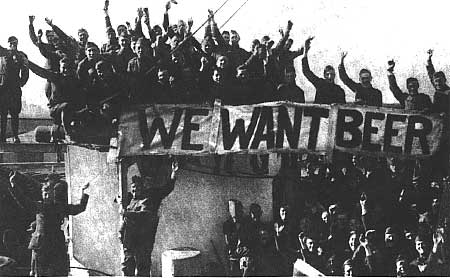Let me take a moment to explain something very new to me (and hopefully throughout this process we can both learn something).
I have been partial mashing and steeping specialty grains for some time now.
Steeping the specialty grains is just like making tea. It will affect the overall taste but not leave much to ferment, while partial mashing will allow just a little of the fermentable sugars to be created while allowing the flavor be imparted.
All-Grain however is something completely different. I have a recipe I have created and the process that I will follow written down, and would like to just go over it a little.
This is the All-Grain crash course from a newbie. Of course if anything needs adjusting please let me know, and at the same time hopefully some will learn from it.
1) Mashing
- Strike water is the first batch of water set inside the mash tun which the malts will be soaked in at a given temperature for an hour or so.
- Generally 1-1.5 quarts of strike water are used per pound of grain.
- The grain will be soaked for one hour in water ranging from 150-158 degrees F
- The temperature chosen for the mash will result in different outcomes
- The higher the temperature (between 150-158F) the sweeter the malts will be, and the lower the ABV will be.
- The lower the temperature the drier the malts will be and the higher the ABV will turn out.
- Remember to have the water at at least 10-12 degrees higher than your mashing temperature, because adding the grain will make the temp. drop.
- It is a good idea to use 2-row malts for single infusion. This just makes life easier all around. (At least 50% of grain should be 2-row)
Equipment can be purchased or even made. I have seen all sorts of different methods but this one really strikes my fancy. Here is a video by Don Osborn. This is a great reference to check out when you are stuck.
(And of course we cannot forget John Palmer and his methods)
2) Sparging
- What I have decided on is 1/2 gallon of around 170 degree water should be over the grains to sparge. This method is the process of extracting the sugars by basically pouring water of mashed grains. Any temperature over 170 degrees could cause the tannins to be more noticeable and therefore causing off-flavors.
- There are many methods of sparging. I personally like Don Osborn's technique but just take a look around a decide for yourself.
- A good rule of thumb is this. Oversparging will create a more watery beer while undersparging will create a more concentrated beer.
Here is my simplified checklist to follow when I brew my all-grain.
-Boil strike water to 166, pour grains in and close the container for 1 hour. (stir well)
-Cover as well as possible and let sit for an hour.
-Mash Out -Pour a couple gallons of boiling water on top to raise temp (optional).
-Collect some of the wort before letting it fill the container.
-This should give around 3 gallons of liquid.
-Close the container.
-Boil 3 more gallons to about 170 degrees (maybe a little higher depending on how far it will be carried, and pour it slowly over the grains.
-This will give us 6 gallons of wort.
-Start boiling the wort as usual.
-Follow recipe!
A lot to take in and it took me a very long to really comprehend it, but if you have any questions feel free to e-mail me at Sudsandsmokes@gmail.com.
I will update the process when the time comes!




